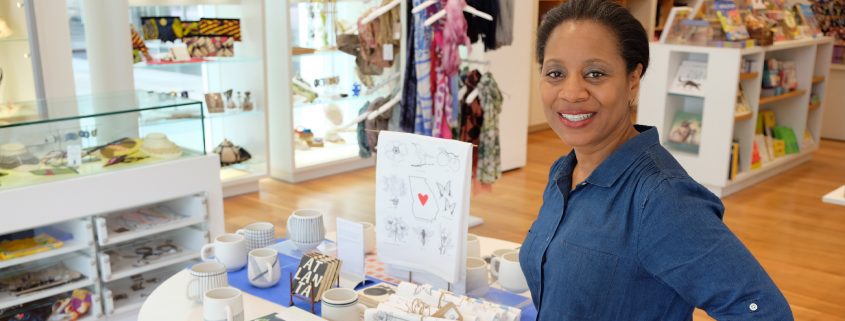Putting the Retail Industry Report to Work for Your Store
By Julie Steiner
Have you ever heard any of the following questions at your institution?
- Why doesn’t the store sell more, given our visitation?
- Inventory? Why does the store have so much money tied up in inventory?
- Personnel is one of our biggest expenses—can’t you do the same work with fewer people?
- Can’t you increase prices and get a higher profit margin?
- The store takes up a lot of space in our institution—what if we use part of it for [fill in the blank: a café, ticket sales, event space, etc.]?
- Everyone’s shopping online these days—can’t we just move to selling on our website?
How do you answer such questions when they come your way? Some might feel a moment of defensiveness, or put on the spot. The Museum Store Association 2018 Retail Industry Report is created to give non-profit retail professionals up-to-date benchmarking data to use: first for assessment of your retail operation, and second to advocate for your store’s business needs. When you understand not only your own business data but also the metrics describing the industry, you can contextualize your business and talk about it with confidence.
Before looking specifically at how to put the MSA Retail Industry Report to work in your assessment and departmental advocating, consider two essential factors:
- Context is key. All of the answers to the list of questions above are relative. The key question to continually ask in any assessment is “compared to what?” Profits aren’t objectively high or low, they are high or low when compared to some other profits. Maybe it’s profits from a previous fiscal year, maybe profits of a similar institution in another city, maybe profits of a nearby corporate/for-profit retailer. Likewise, a store isn’t inherently big or small, a store is bigger or smaller than some other store or perhaps is being compared to some other department. Inventory, personnel, sales, e-commerce: no single measurement is objective, they only make sense in comparison, and the context for comparison needs definition and clarification. The Retail Industry Report is designed to give you that definition and point of comparison to answer detailed questions about your business.
- Data is neutral. It’s human tendency to shrink from statistical feedback, as if numbers reveal something we won’t want to see. It’s like refusing to go for a medical checkup to avoid hearing something we’d maybe rather not hear. But the numbers don’t care about us: they are impartial, and non-judgmental. We bring the judgment, the data itself is neutral. And when we look at those numbers as neutral feedback, and know how to assess context, they can only help. Ask yourself “what’s the worst that can happen?” Maybe the worst is that we find our business strategy has a weak spot—but just as we want to know our daily sales totals on the days when business is slow, as well as when it’s busy, we can’t fix what we haven’t measured. At the end of the day, it’s not knowing that presents the most risk. So let’s take a look at some of those hypothetical questions listed above, and how the MSA Retail Industry Report can help answer them. First of all, the report covers a variety of institutional types and sizes of operations. For the purposes of this exercise, I have pulled the stats specifically for art museums to use as examples. Data for stores from history, natural science, and other types of museums and institutions are included in the report too, and you can do this same comparison for those stores.
 I prefer to study and present statistics in graphic form, so I’ve made some example charts based on the summary statistics in the Retail Industry Report. The graph represents the median figures for all art museums responding to the MSA survey. Other art museums can plot their size against this graph. I’ll use extreme examples for purposes of illustration: perhaps a store has sales of $500,000, and takes up 4,000 square feet in a museum’s entry lobby. That museum board might be reasonable in saying “some of this space could be better used, apportioned to a different use.”
I prefer to study and present statistics in graphic form, so I’ve made some example charts based on the summary statistics in the Retail Industry Report. The graph represents the median figures for all art museums responding to the MSA survey. Other art museums can plot their size against this graph. I’ll use extreme examples for purposes of illustration: perhaps a store has sales of $500,000, and takes up 4,000 square feet in a museum’s entry lobby. That museum board might be reasonable in saying “some of this space could be better used, apportioned to a different use.” On the chart above, I’ve added visitation: the axis on the left shows attendance to the museum, the axis on the right is square footage of stores. Here, a store making $450,000 a year in a 500 square foot space, with 300,000 visitors coming through each year, might look at this and say “we could increase our retail earnings by expanding the physical space given over to our store.” Of course, many other factors play into each conversation, but how do you know if your store is “big” or “small” unless you know “compared to what?” Plotting your own store on a graph allows you to compare to the “average art museum store, of a certain visitation number and gross retail sales volume.”
On the chart above, I’ve added visitation: the axis on the left shows attendance to the museum, the axis on the right is square footage of stores. Here, a store making $450,000 a year in a 500 square foot space, with 300,000 visitors coming through each year, might look at this and say “we could increase our retail earnings by expanding the physical space given over to our store.” Of course, many other factors play into each conversation, but how do you know if your store is “big” or “small” unless you know “compared to what?” Plotting your own store on a graph allows you to compare to the “average art museum store, of a certain visitation number and gross retail sales volume.”
As for the rest of the questions listed above? The stats in the Retail Industry Report that can help you answer those questions fully, and compare to your segment of the market, include but are not limited to:
- Sales per visitor, average transaction values, and proportion of attendance that comes from school groups, tour groups, and special events (particularly useful when those groups exhibit different buying behaviors from the general admission visitors).
- Inventory values, cost of goods sold, annual inventory turn, number of vendors and number of SKUs.
- Tallies of paid staff and volunteer positions, with wages, salaries and benefits, including sales associate’s positions.
- Profit margins, cost of goods sold, margin per transaction, margin per visitor, margin per square foot.
- Store sizes, visitors per square foot, sales per square foot, and gross margin per square foot.
- Percentage of retail sales from e-commerce, median purchase amounts for e-commerce, number of items offered online, and top-performing items sold online.
I’ve highlighted only a few among many of the conversations museum retail professionals have about their operations every single day, that can be clarified and contextualized with data from the MSA Retail Industry Report. The amount of data compiled in the survey process is enormous, and the ways of looking at it are as varied as the stores represented. Aggregating and sharing our community data is one of the top services an industry association such as MSA can provide. Whatever challenges and questions you face in your organization, chances are that understanding those within the context of the industry will highlight strengths and opportunities that can help your business grow stronger. It will help you advocate to the decision-makers for the improvements you need to strengthen your business!
The 2018 MSA Retail Industry Report can be ordered online here. The 2018 MSA Retail Industry Report is sponsored by Andoniadis Retail Services.
Julie Steiner is the Director of Retail Operations for the Barnes Foundation in Philadelphia, PA and the 2017-18 President of the Museum Store Association Board of Directors.













